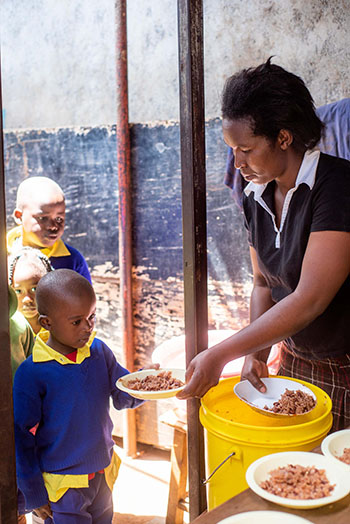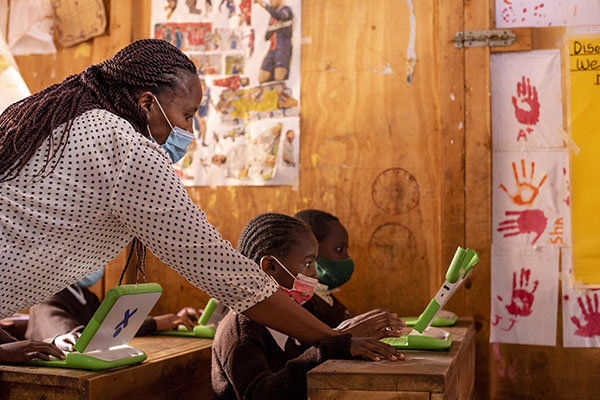Dear KCEF Friends & Supporters,
We want to share with you our concern about the tragic impact the pandemic is having on children in our partner schools in Kenya. So far, Kenya has been spared the worst of what was expected. But no one knows what might still be coming, especially since health care data is so unreliable.
Here are some of the pressing concerns:
Before the pandemic, it was estimated that one third of Kenyans lived below the line of extreme poverty. The country’s fragile and inadequate health care system rarely touches the poorest and most vulnerable families.
Schools in Kenya were closed from March 2020 to January 2021. There were curfews, lockdowns and travel bans from county to county. This had a drastic impact on families in Nairobi’s slums. Most of the children in KCEF partner schools come from one-parent families, and a number are orphans living with relatives.
A great many parents have lost their marginal and part-time jobs and are experiencing severe economic stress, food insecurity and very real safety concerns for their children. In some counties, teen pregnancy tripled in the first few months of the pandemic.
Economic stress and very high unemployment continue. Parents are struggling to eke out a living—finding it hard to provide food and shelter for their children. School fees and uniforms have become unaffordable for many. Without fees, schools are desperate to meet expenses and continue operating.
Classes resumed in January 2022 and are continuing. ALL of the KCEF schools have full enrollment and committed teachers. All are also in a race to make up the deficit of almost a whole year with no formal classes.

Lunchtime at Blessed Children’s Centre in Kibera Slum
Our schools tell us of their struggles to keep kids in school and meet expenses, as so many parents are still unable to pay the minimal school fees (some are paying partially). School leaders are worried about how they can continue to provide daily meals to children and pay their committed teachers.
During this time of increased stress for parents and for schools, we are committed to providing as much additional help as we can. Financial resources are critical to ensuring:
- All children are still receiving two meals each day at school
- Teachers are being paid and encouraged
- New curriculum materials and resources are being purchased
- New classrooms are being added and others renovated
- Additional computers are being provided
We are focused on “standing in the gap” for these schools and their/our students. Since education is the key for our 2,000 students to be safe, to grow, and to escape the desperate cycle of poverty, we remain focused on our mission of helping to provide hope—even in such a dark time as this. To continue our support through 2022 and to meet increased needs, your support is critical.
Together we can get through this year with strong schools and successful students—and look to a much brighter future.
Gratefully,
Craig Hammon

